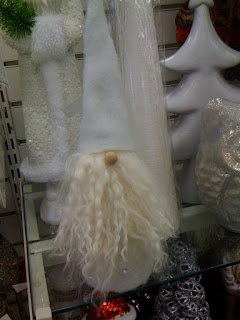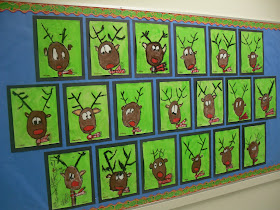Digging through my big bin of craft supplies in the summer I found this bag of pom poms in this really unappealing colour that I had inherited somewhere in my teaching career. I've had the bag for years as I really had no idea what to do with them, other than toss them into the arts and crafts center for the kids to use in their own projects.
Until I came across this little guy:
I found this winter gnome in Winners and was instantly inspired! Old man winter turned into this Santa Gnome:
Supplies for this craft:
red felt
red acrylic paint
white and flesh coloured pom poms
small plastic bottles (I used DanActive)
White craft fur or cotton balls
glue gun (or red thread if you feel confident in getting your kids to sew)
craft glue
Directions:
1. Remove the labels from your plastic bottles. I cut the plastic labels off all the DanActive bottles. I happened to have tonnes that I had been saving to make penguins.
2. Paint the outside of the bottles with the acrylic paint and leave to dry. I actually spray primed the bottles because I saw someone else do that when painting plastic bottles, but honestly I'm not sure it is necessary. I did find that when the kids painted that the colour didn't go on evenly, even with a second coat. If I did this project again (and I probably will since I still have so many pom poms left!) I would probably try to replicate the original and paint the bottles with a coat of white and then sprinkle with white glitter!
I also taped the openings of the bottles when they were dry with packing tape.
3. Cut out shapes to make the cone hats from the felt - sorry I don't have a template. Fold the felt and secure with a needle.
Carefully open the felt - as if it was a card and draw a line of hot glue gun along the edge from top to bottom, and then close again. Or, option 2 is to sew this edge with red thread. Doesn't have to b really well done because it will be turned inside out.
4. I precut l the craft fur into triangles. The kids used craft glue to glue the beards to the bottles.
5. When the hats were dry, we carefully turned them inside out and stuffed another cotton ball into them.
6. We then carefully put them over to the bottle and squeezed some glue underneath to secure them.
7. Use craft glue to add the white pompom to the hat and the beige one for the nose.

















































